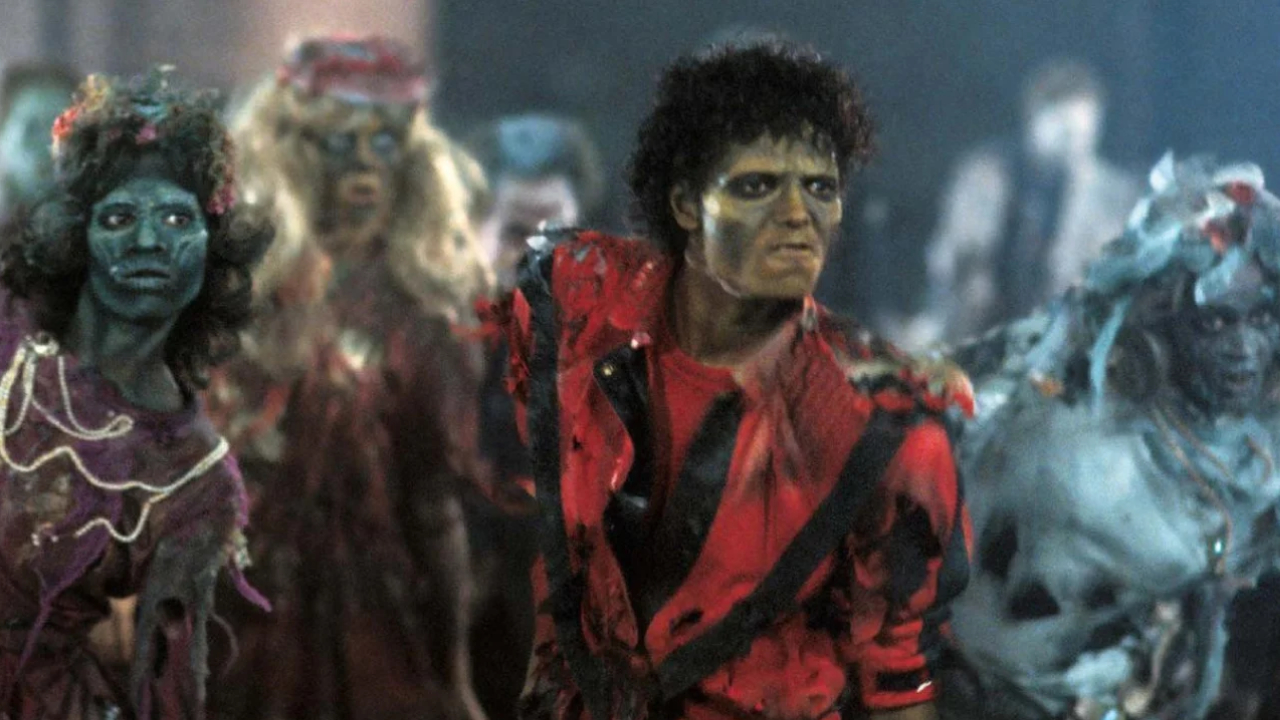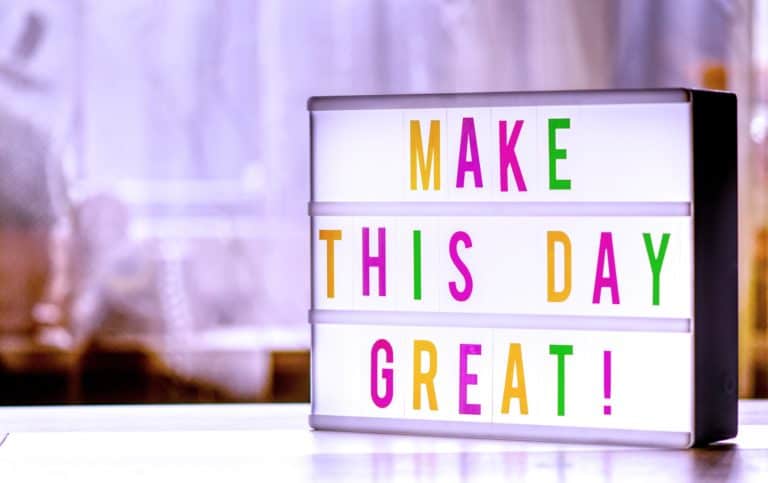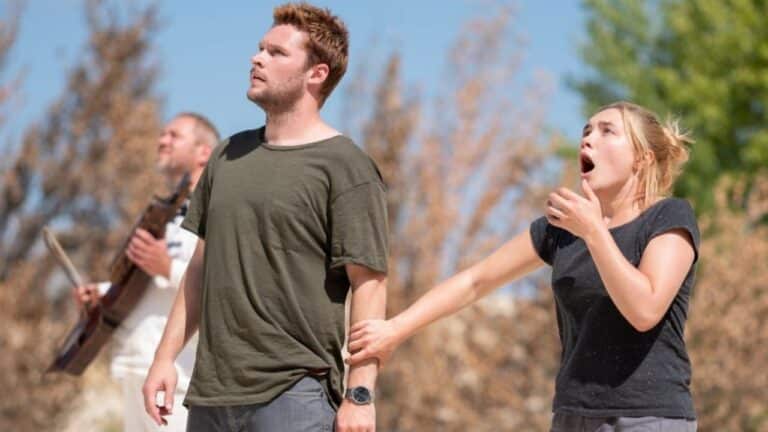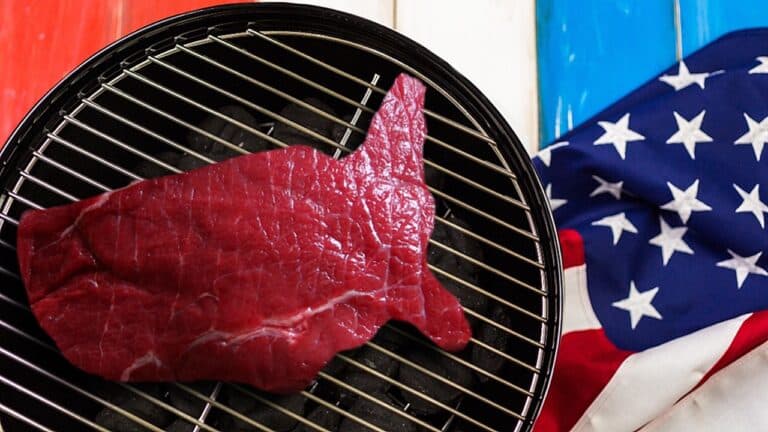20 Iconic Songs With One-Word Titles

Cher. Sting. Adele. Prince. The music business is known for iconic performers that go by a single word. It’s not just the one-word artists that have captured our hearts. The same is true for one-word songs.
Though many track titles contain just one word, only some are remembered through the decades, remaining culturally relevant despite their age and genre.
These songs — many of which were major hits at the time of their release — are still everywhere, from wedding reception playlists to the soundtrack of blockbuster movies.
Superstition (1972)

I’m very superstitious of an audiophile who never heard Stevie Wonder’s “Superstition” classic from the ‘70s. Rolling Stone ranks the electric track as one of the best songs to exist, as exhibited by its Grammy-winning status.
The funk-oriented rhythms skyrocketed Wonder’s fifteenth studio album, Talking Book (1972), to high Billboard numbers. “Superstition” delves into the matter of irrational beliefs supplementing negative results. “Superstition ain’t the way,” Stevie chants during the chorus.
Poison (1990)

Stepping onto a cardboard mat to bust out some moves brings nothing but the best of ‘90s dance culture. One of the go-to tracks for the boombox to sing out belongs to Bell Biv DeVoe’s “Poison” single. Produced in the “new jack swing” style, an incredible stretch of music charts highlights “Poison” as a hit.
MTV fanatics recall the Lionel C. Martin-directed music video basking in purple hues and hip choreography. The footage visits a few locations while Bell Biv DeVoe raps, dances, and parties to their “Poison” track.
Kryptonite (2000)

Subjecting oneself to poison drives a different dose of lethality with “Kryptonite.” By instilling a small connection to Superman, 3 Doors Down rocked the music industry with its debut single. Their single “Kryptonite” ranked 43 on the U.S. Billboard Hot 100 Chart from 2000 to 2009.
In the post-grunge era that dominated the late-1990s, more energetic acts picked up the instruments and acquired fantastic acclaim. A touch of madness accompanies the “Kryptonite” music video, establishing a comic book-inspired narrative starring elderly nerds.
Tequila (1958)

Popular culture typically pours out the original “Tequila” rendition whenever a cinematic opportunity presents itself. Its Latin-inspired melody and suave instrumental infusion find themselves in countless covers and sources. Creators usually replace the single-worded shout with something aptly presentable.
The famous saxophone melody in “Tequila” from The Champs complements the overall tune, favoring the popular Mexican beverage. With only one word in its lyrics, the song unites any gathering, regardless of background or occasion.
Footloose (1984)

Excessive tequila consumption usually leads to fantastic dance scenes, though “Footloose” encapsulates its vices with Kenny Loggins. Serving as the title track for the 1984 dance drama, “Footloose” kicks off its swingin’ shoes with rock music galore. The tune seeps deeply with rockabilly roots, and its charming presence earned it an Oscar nomination for Best Original Song.
Though mildly a rebellious anthem, “Footloose” serves as a great musical addition to any wedding, birthday party, or graduation. Its melody exudes fun vibes by psychologically instructing its listeners to “cut loose” and break free with music and dance.
Ghostbusters (1984)

The 1980s produced several recognizable movies that presented catchy, one-hit wonders for fans to cling to. Of course, “Ghostbusters” aligns with this phenomenon while generating a fandom in its own right. As a result, almost everyone knows Ray Parker Jr.’s synth-pop gem. It accompanies the 1984 film of the same name while acting as Parker’s chart-topping single.
Striving for the 1980s nostalgia comes as easy as playing Parker’s electric tune. The familiar chorus and synthesizer-infused rhythms bring enough mental juice to realize its exemplary funky sound. Future Ghostbusters sequels instill the basic melody for a dose of cinematic acquaintanceship.
Thriller (1983)

Michael Jackson supplemented his bold career by releasing his Thriller album in 1982. Produced by Jackson and Quincy Jones, Thriller garnered significant acclaim from critics and fans for implementing pristine disco-funk magic. Its title track notably emits spooky yet groovy vibes.
Songwriter Rod Temperton pens the “Thriller” horror narrative, incorporating eerie sound effects and Vincent Price voiceovers. The song extensively feeds on several scary threads from the terror-filled genre while delivering a groovy melody. Moreover, the “Thriller” music video lives on as one of the best from the 1980s.
Rasputin (1978)

Attaching a hip rhythm to a dark subject matter flies over many heads, and “Rasputin” delivers on the occasion. The eponymous song follows a standard composition, yet its uncanny structure brings waves of success. In addition to ranking highly on music charts, plenty of films and television programs feature the Boney M. hit.
Social media, particularly TikTok, partially brought “Rasputin” into the mainstream spotlight. The song describes a few key events involving Grigori Rasputin’s actions in the 19th and 20th centuries. Though its lyrics depict Rasputin’s rise and demise, it rings in an intimate and addictive chorus.
Jolene (1973)

Bob Ferguson produced one of Dolly Parton’s greatest songs with “Jolene” in 1973. Its authentic portrayal of complicated love drives much attention to the country music genre. Many fans connect Dolly Parton’s lore with a timeless musical classic by uttering a single name.
While a 1970s classic, many artists interpret Parton’s lyrics with different takes and styles. Olivia Newton-John, Beyoncé, Pentatonix, and many others unleashed covers; “answer songs” responding to the original lyrics also exist from artists like Okay Kaya and Cam.
Reunited (1979)

It feels invigorating to know someone you adore or admire recognizes the lyrics to Peaches & Herb’s “Reunited” tune. Not only does it offer karaoke potential, but it also unifies any gathering for soul and pop lovers. Though disco remains dead to some, “Reunited” is one of the most distinguishable songs of the genre.
Like other pop tunes from the 1970s, “Reunited” centers on the celebration of love. It speaks of the excruciating longing for a romantic interest and the subsequent reconciliation. With such a simple, relatable message, “Reunited” never fails to restore some of that eager yearning.
Changes (1972)

David Bowie possessed a peculiar gift of reinventing himself through his art. Before adopting the Spiders from Mars band, Bowie created “Changes” with producer Ken Scott. Though initially a flop as a single, the song attained mainstream love and attention. Many outlets cite it as one of Bowie’s best tracks, with its title living as a term for some of his compilation albums.
Plenty of natural shifts occur in life, and “Changes” explores this idea with an art-pop demonstration. Bowie illustrates his beliefs with noted sentiments regarding time. “Time may change me, but you can’t trace time,” Bowie sings in the song’s contagious lyrical assembly.
Pride (1984)

When people talk about fight for Civil Rights, they often talk about Martin Luther King, Jr., and the work he did for the movement. Naturally, there are many songs that speak to King’s legacy, and U2’s “Pride” uplifts fans and activists alike. While its cultural inception received mixed reviews, the song has left an undeniable impact.
“Pride” ranks highly among other U2 tracks, including “Desire” and “With or Without You.” Justice, love, and unity all play vital themes in the lyrical structure of “Pride.” Moreover, it features heartfelt vocals from Bono and an insane guitar riff from The Edge.
Vogue (1990)

Listeners immediately strike a pose when Madonna’s “Vogue” plays over the airwaves. At the local nightclub or anywhere on the dancefloor, “Vogue” demands fabulous and focused sways. Director David Fincher supplies the music video for Madonna’s exciting hit, which inadvertently manifests the famous black-and-white footage.
Mixing motifs of self-confidence and control, “Vogue” represents the layer of the human soul that needs to let loose. It shares the idealism of empowerment, and many references today aspire to replicate the music video’s influence.
Physical (1980)

Tuning into sexual matters turns some listeners away, yet Olivia Newton-John rekindles that desire in “Physical.” By insinuating certain bodily cravings, “Physical” knocks on many controversial and anodyne boots. It accompanies a saucy music video where Newton-John clings dangerously close to lesser-clothed men.
The spicy lyrics wrap their heads around intimate relations. With a one-word title like “Physical,” the connotations start piling up. Suitable for a workout or an approaching date, this dance-pop hit stays in many sweat-stained playlists.
Africa (1982)

Toto generated loads of rock-filled tracks fans remember, yet “Africa” remains their best-known hit. By relying on cultural observations, David Paich of Toto writes about the beauty of the African continent. While released in the early 1980s, internet memes and videos today show countless renditions of the soft rock song.
With its gentle, productive push, the tune soothes the soul with an uplifting melody and warm lyrics. Match its rhythm with a powerful refrain, and listeners get a timeless classic in their ears. Weezer once blessed the rains down in Africa with a 2017 cover as a single.
Stan (2000)

While some songs dedicate their lyrical structure to a known location, some turn to specific individuals. For Eminem, he writes about an overtly obsessed fan who continuously drives himself to the edge of insanity in “Stan.” Given this portrayal, critics and music enthusiasts view “Stan” as an all-time great, lining it up as one of Eminem’s most impactful.
By creating a jumbled persona of a demented fan, “Stan” offers an insight into twisted fandom. It illustrates a troubled relationship, envy, and death; Eminem explores these themes in other popular songs. Whenever anyone mentions a “Stan” in conversation, the source points typically toward Eminem’s introspective lingo.
Umbrella (2007)

Rihanna’s extensive range of hit singles goes as far as her “SOS” and “Unfaithful” tracks. However, “Umbrella” lives on as an energetic supplement for any season of the year. Featuring Jay-Z on the track “Umbrella” instills a magical motivation to spin and sway along.
Undying love and support serve as primary themes for “Umbrella,” with its focused object acting as a metaphor for protection. Many musical acts and entertainment outlets, including Baseballs, OneRepublic, and Taylor Swift, feature “Umbrella” in the fun.
Jump (1983)

Van Halen emerged as one of the more identifiable bands from the 1970s and 1980s. The band’s dynamic “Jump” everberates across generations mainly due to its rapid tempo and catchy lyrics. As such, the song appears in various film and television shows, like Ready Player One and Glee.
Taking risks in life remains an essential sentiment, and the lyrics in “Jump” propel this idea with a pop-rock presentation. The chorus establishes a sense of bravery by David Lee Roth enthusiastically exclaiming its title.
Supercalifragilisticexpialidocious (1964)

Though the Sherman Brothers coined several playful terms, “Supercalifragilisticexpialidocious” remains their most innovative. The complex onomatopoeia plays during the 1964 Mary Poppins original. Its show tune arrangement pinpointed its cultural status to an admirable degree with high chart positions and certifications.
In a nutshell, “Supercalifragilisticexpialidocious” mashes equivocal references to something great or outstanding. Its nonsensical spelling lives as a famous phrase some turn to when they need an unsuspecting expression.
Yeah! (2004)

Slamming together artists Usher, Ludacris, and Lil Jon for a banging song creates wonders for the nightclub. “Yeah” submits itself the magic of “crunk&B,” as coined by Lil Jon as the track’s producer. By infusing such talents, Usher stays on a high seat with the Billboard Hot 100 chart. Moreover, thanks to its reliable rhythm, creators use “Yeah” as the perfect go-to for party scenes.
Usher’s other songs incorporate similar themes of complex romantic thresholds. “Yeah” sweats in nightclub anticipation, and the song’s tasteful composition makes it a worthy selection for any loud occasion.





